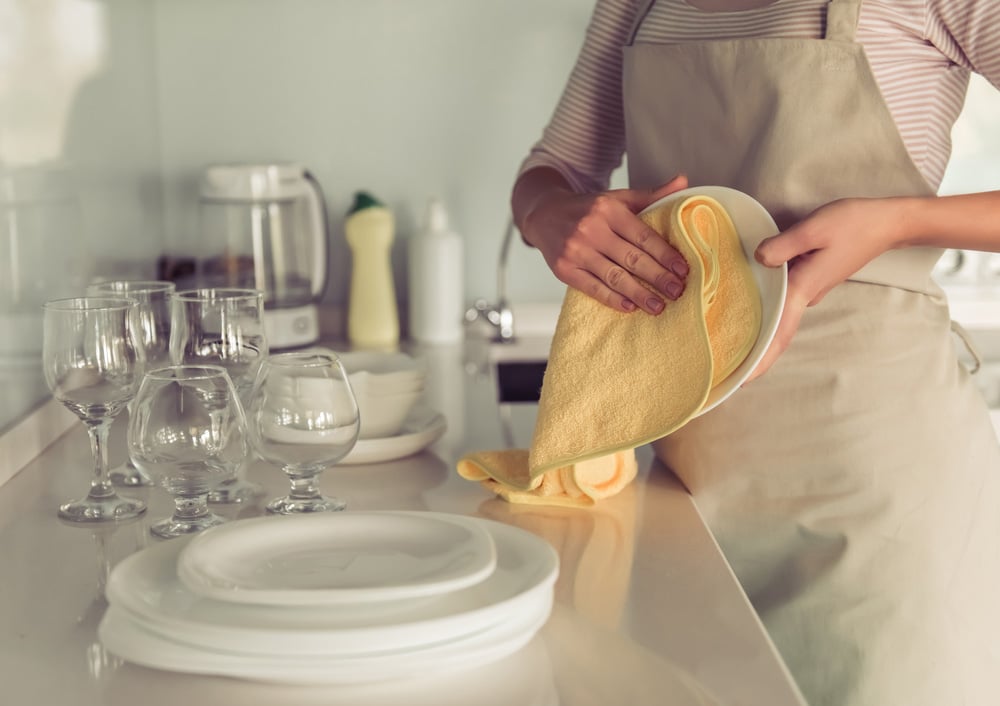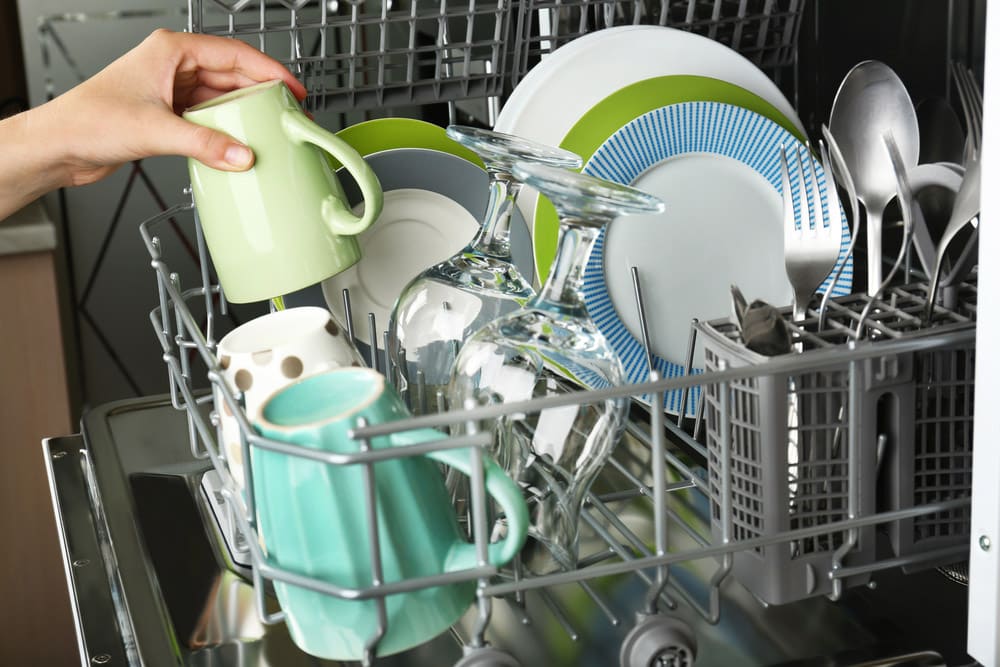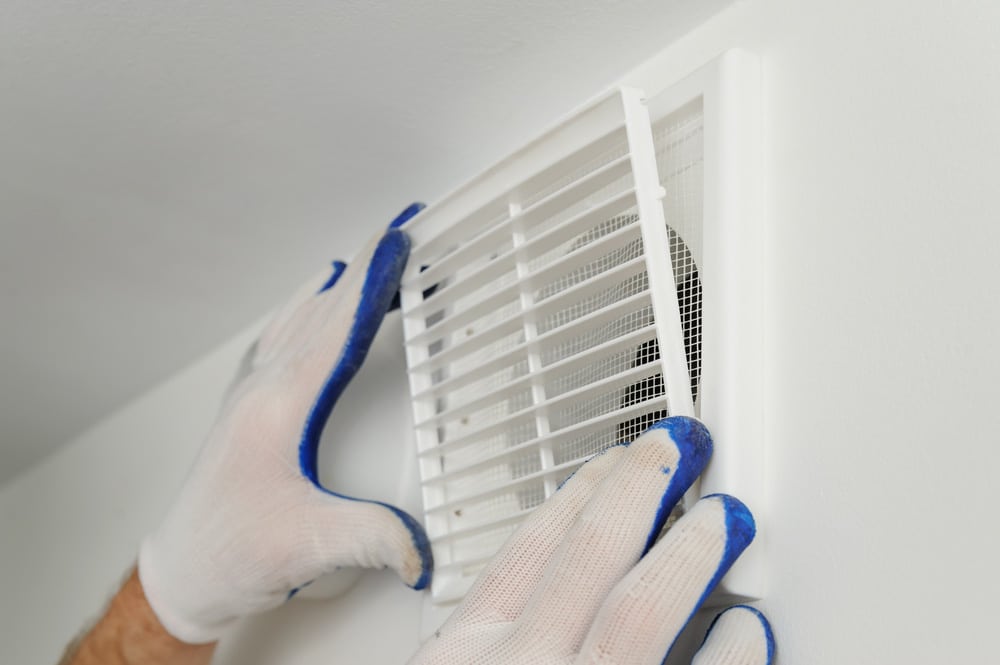
The best appetizer in the world is a well set, attractive table. It doesn’t matter how simple the meal is, the way the food is served is half the challenge. A well set table lies in the clean linen, the shiny cutlery, and the gleaming glasses.
If cups and glasses are smudged and grimy looking, you’d think twice about drinking from them. Each piece of cutlery and dinnerware must be sparkling clean.
Restaurants and even you, as a host or hostess, can lose out on customers and visitors by serving up food on cutlery and crockery that looks murky. Smudged glassware and cutlery is a massive turn off, especially since covid-19 where cleanliness has come under the spotlight.
Cups and Glasses Are Taking Too Long to Dry
Could it be that it’s simply the way your cups and glasses are drying? If they’re taking too long to dry, it could be the reason they don’t look sparkling clean. So we need to get to the root cause and find out why cups and glasses are taking too long to dry.
- You’re using the wrong dish towel

There are several factors that go into choosing the best dishcloths for drying crockery. The cloths come in different absorbent materials: cotton, linen, and microfiber. Kitchen towels that are 100% cotton should possibly be the first thing to look for if you dry dishes manually.
These are good quality kitchen towels that will dry your crockery quickly. They are made from a quality, quick-drying fabric. The towels are amazingly absorbent and promise to dry dishes quickly, leaving them with a shiny, streak-free look.
- Wash new kitchen towels to increase absorbency
When you buy new dish towels, wash them immediately before use. This is because manufacturers are known to coat the towels with a particular chemical that makes them feel soft and absorbent. However, the coating makes the towel less absorbent and not able to dry your crockery quickly.
Also, did you know that fabric softener can also interfere with a kitchen towel’s absorbency, leaving a water-resistant layer on the towel? The solution is to to avoid using fabric softeners for your dish towels.
- Many dishwashers no longer have dryers
Dishes washed in a dishwasher from bygone days would always come out sparkling clean, dry, and somewhat hot to the touch. With many modern dishwashers however, cups and glasses are taking longer to dry.

Remember, though, that plastic cups and other items can take longer to dry than glass, stoneware, or porcelain. Whether glass or plastic, your cups and glasses may well have drops of water on them when you remove them from the dishwasher.
There is a reason for this. Today’s dishwashers are energy efficient. Older dishwashers used to have a heating element at the bottom of the dishwasher.
It would automatically turn on at the end of the wash cycle and dry up all the remaining water. To ensure dishwashers are energy efficient, manufacturers are doing away with drying elements.
- The heating element could be faulty
It could also be that the heating element in your dishwasher may be faulty. One of its purposes is to assist in the drying cycle once the washing cycle is complete. The heat removes the water from your dishes quickly so that it doesn’t leave water spots.
Your dishes should be dry and warm to the touch. If they are cold and damp, your heating element is faulty. It’s quite possible you will need to replace the heating element.

- You’re not using a crockery-drying resource
Many people buy rinse aids from their grocery stores. The name is deceiving, as it is a drying aid with hydrophobic properties that make it impossible for water to remain on your dishes.
The water literally slides off cups, glasses, and plates and leaves them water-spot-free. Most of these rinse aids have chemicals known as surfactants so that water doesn’t form droplets. The water just rolls off your dishes so that they dry quickly.
Look out for the eco-friendly brands that make rinse aids from plant-based formulas. These homemade rinse agents can even be made from ingredients you probably have in your kitchen. The rinse aid can be used each time you do a load of dirty dishes in the dishwasher.
Just be sure to check out the manufacturer’s user manual before using anything that isn’t a commercial rinse agent. An excellent rinse aid is a mix of vinegar, citric acid, and hydrogen peroxide.
- Your air isn’t dry
Most people without dishwashers simply wash their dishes in a sink and then place them on a clean drying rack. The dishes then air dry. Air drying can be quick if your kitchen is well ventilated.

If your kitchen isn’t well ventilated, your dishes may take long to dry and still be wet when you pack them away. Wet cups and plates can become contaminated with bacteria.
If your kitchen is a warm, moist environment, dishes take longer to dry. Experts tell us that all dishes should be air-dried before being stacked and stored.
- Not enough ventilation
If your cups and plates are taking too long to dry, you may not have enough ventilation in your kitchen. You will sometimes have to dry off some items that still have water on them
Ideally, to dry dishes quickly, your kitchen needs low humidity, good air circulation, and a source of low heat that allows moisture on your dishes to quickly evaporate. Range hoods are a great addition to a kitchen, but if you don’t have one, fans are a good alternative.
When properly positioned, they blow fresh air into the room and remove moist, stagnant air. If you don’t have a range hood or fan, open indows in nearby rooms. Cups and glasses won’t take so long to dry if your kitchen is helped along with some form of ventilation.
Conclusion:
If your dishwasher doesn’t come with drying options, there are other ways to help speed up the drying process. One of these is to make sure that you allow space between your dishes and not allow them to be stacked too tightly together.
Once the dishwasher cycle ends, you can also open the dishwasher door to allow moist air to escape and to allow dry air in. If you dry your cups and glasses yourself, always dry with a clean, dry towel.
Whether your dishes dry off in a dishwasher or on your drying rack, a clean, dry cloth to remove left over water drops is all that’s required. It will ensure your cups and glasses are dry and shiny before packing them away.

I bought a Brand new Midea MDT24P5AST dishwasher and after full cycle including extended dry time with Finsh dry liquid. The dishes are still wet as well as the entire tub and door is wet! What di I do about this?